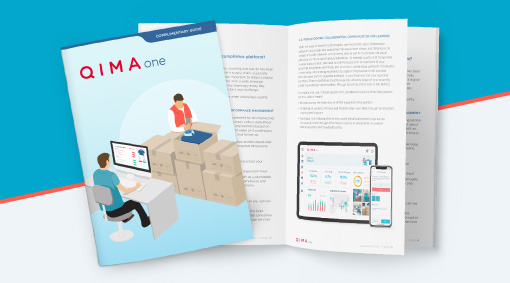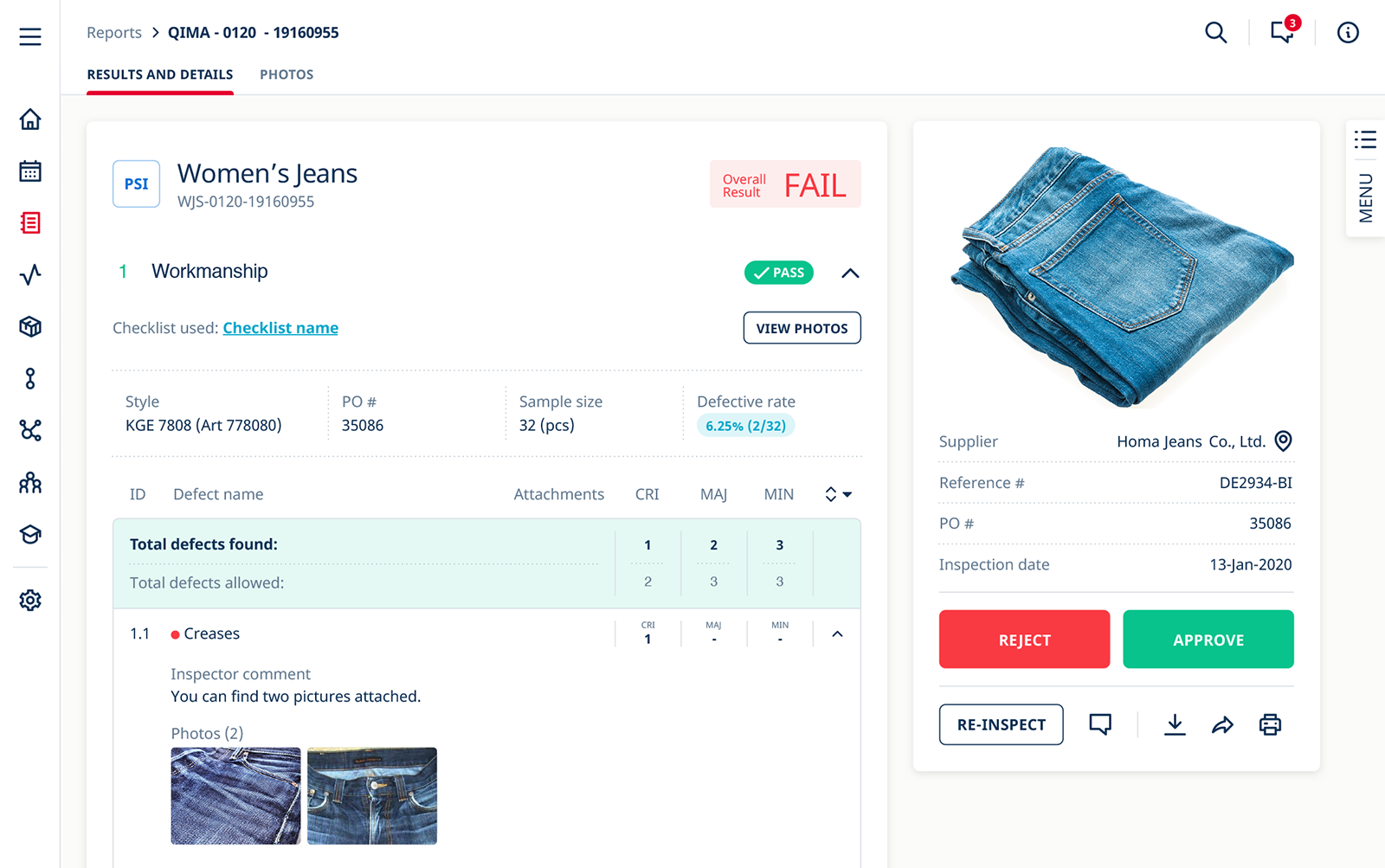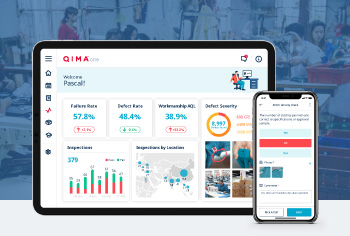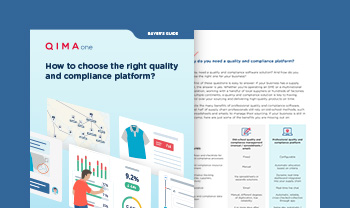
Articles
Supply Chain Software Applications for Quality Control

Articles
Supply Chain Software Applications for Quality Control
Articles
Supply Chain Software Applications for Quality Control

随时了解最新的供应链信息。
Organizations looking to expand their technological capabilities to include supply chain quality control software will find several options available. The software often includes several different features or applications, and each has its uses. Your choice of supply chain management software depends on the specific needs and requirements of the company, as well as the industry in which it operates.
The types of applications of supply chain management software often used for quality control can allow companies to communicate specific standards, define quality metrics, and track product quality throughout their supply chain. It’s a valuable tool for gaining visibility throughout their network and a competitive advantage in their sector.
Key Takeaways:
In this article, you will learn how:
- Leveraging statistical methods through supply chain management software optimizes operations, predicts issues, and enhances quality while minimizing waste and cycle times.
- Digitizing and streamlining inspection processes with advanced scheduling and analysis reduces errors and missed inspections.
- Supply chain management software facilitates effective supplier quality management by ensuring adherence to quality standards and regulations through actionable analytics and performance monitoring.
- Handling and monitoring non-conformance instances with supply chain management software. This enables root cause analysis and prevents future problems.
- Implementing Corrective and Preventive Action (CAPA) processes using supply chain management software to address quality issues, foster collaboration with suppliers, and track processes for identifying and resolving mistakes, defects, and failures, ultimately improving quality and compliance.
The Benefits of Supply Chain Software:
Supply chain management software used for quality control can allow companies to standardized product quality standards, monitor supplier performance metrics, and trigger preventative actions to mitigate risk throughout their supply chain. using supply chain management platform allow you to gain more visibility and a competitive advantage in your sector.
As McKinsey notes, supply chain digitization that includes quality management software will result in many significant improvements, including:
- Improved flexibility: planning cycles are shortened, and new delivery processes allow for re-routing during shipping.
- Boosted efficiency: manual tasks are automated, and software allows for the optimization of logistical resources.
- Increased speed: better forecasts and predictive shipping ensure materials and products arrive when and where they’re needed.
- Additional individualization: the software allows for micro-segmentation and the availability of a wider range of products.
Perform easy self-inspections
with your factories
Learn more!

Perform easy self-inspections
with your factories
Learn more!
The Five Applications of Supply Chain Software for Quality Control
Statistical Process Control (SPC)
Statistical process control (SPC) uses statistical methods to monitor and control a manufacturing process. The software is designed to collect data on the output of a process over time, then used to identify patterns or trends that may indicate a problem.
Manufacturers use this data to optimize their systems and make repairs before machines break down. It allows them to react quickly and predict problems before processes or quality are disrupted.
Organizations taking advantage of SPC features find the data to be a powerful tool for making decisions. Data analysis boosts quality, reduces waste, and decreases cycle times. Some manufacturers find significant savings thanks to the reduction of warranty claims and decreased scrap costs.
Statistical process control software often contains the following:
- Tools for collecting and analyzing data
- Statistical process control charts
- Automated data collection
- Integration with other quality management systems
Inspection Management
An inspection management feature digitizes the old pen and paper methods of taking, recording, and reporting measurements. It helps organizations manage their inspection processes more efficiently. Inspection management allows organizations to schedule, plan, and execute inspections, as well as track and analyze inspection data.
Some inspection management options may be designed for certain applications or inspections and may include industry-specific features and compliance requirements, such as checklists, regulations, and standards. Software that enables hands-free inspections and digitized measurement recording is beneficial in supply chains that use a high volume of individual parts or products.
Inspection management features can often be customized by the user to match the industry or the users’ needs. Because of its customizability, inspection management is one of the most widely used supply chain features available. The best, most user-friendly inspection apps include automated booking and reporting to ease decision making, improving productivity and time to market.
Inspection management applications typically allow for the following:
- Streamlined inspection processes
- Improved accuracy and consistency of inspection data
- Scheduled and managed inspections
- Improved inspection efficiency
- Reduced risk of errors or missed inspections

Supplier Quality Management (SQM)
Supplier quality management (SQM) is designed to help companies manage the quality of the products and services provided by their suppliers. It helps to ensure that the supplier’s products meet the required quality standards and that they are delivered on time and at the right price.
Good SQM features facilitate actionable analytics. They include thorough and customized dashboards that can be used for very detailed analysis into the product and compliance states. With a detailed analysis, thanks to performance metrics, your team can rate each supplier’s risk level to identify high risk factories and take appropriate actions.
Business experts are beginning to understand how important it is to use strategic management to optimize your relationships with suppliers, regardless of your industry. As supply chains become more complex and more global, the SQM feature provides a platform to track all the moving parts that go into delivering products that meet customers’ needs.
In fact, strategic supplier management is so important the experts at Supply Chain Management Review suggest completing a thorough audit of supplier quality management practices, with an emphasis on software platforms and features, to ensure there are no blind spots in your capabilities. Good SQM applications can significantly reduce your vulnerability to challenges with suppliers.
Functions you can expect to find in a supplier quality management feature include:
- Supplier evaluation and selection
- Customizable dashboards
- Supplier performance monitoring
- Supplier compliance with industry standards and specific quality requirements
- Communication tools
- Supplier scorecards
Non-conformance Management
Non-conformance management helps organizations handle and track non-conformance issues related to products, processes, or services. These include any deviation from established standards, requirements, or procedures that can impact the quality, safety, or regulatory compliance of the organization's products or services.
While all industries can benefit from software that helps maintain conformance to standards, industries monitored by USDA, FDA, and other governmental entities with strict safety regulations find it particularly useful. That includes the aerospace/defense, construction, food and beverage, and healthcare industries.
Non-conformance management features provide a central repository for recording and managing supplier failures, from identification to resolution. While all supply chain quality software boosts visibility, it’s especially crucial when concerning regulatory matters. Non-conformance management streamlines the process of documenting, investigating, and resolving non-conformance issues, making it easier for organizations to identify root causes, track corrective actions, and prevent similar problems from occurring in the future.
A Non-conformance management application typically includes:
- Automated notifications, workflows, and reporting tools
- Adaptability to the compliance standards important to the specific product
- Real-time visibility into the status of trouble tickets
- An ability to track and report trends.

Corrective and Preventive Action (CAPA)
Corrective and preventive action (CAPA) features are used by organizations to manage and track the processes they use to address mistakes, shortcomings, defects, and failures. A CAPA application helps organizations identify and address quality issues or problems in their supply chain, as well as prevent those issues from occurring in the future.
Good CAPA functionality facilitates communication between you and your suppliers. It should eliminate the bottlenecks that slow down corrective processes and encourage collaboration and supplier ownership of quality and compliance goals.
Within the best CAPA applications, brand users can trigger a corrective or preventive action plan in collaboration with factories based on the results of an inspections or even linked to a report. You can track progress and status and share documents and comments in real-time as they’re written.
CAPA features can be used in a variety of industries, including manufacturing, healthcare, and pharmaceuticals. In the manufacturing industry, for example, a CAPA function helps identify issues in the production process and aids in the implementation of corrective and preventive actions. In the healthcare industry, the CAPA application is used to identify and address issues related to patient safety and regulatory compliance.
You can expect corrective and preventative action applications to include several features, including:
- Tools for documenting and tracking trouble tickets
- Clear scheduling tools for team members throughout the supply chain
- Status tracking of corrective and preventive actions
- Data analysis for identifying trends or patterns
Final Thoughts
Ultimately, the best type of supply chain management software is the one that addresses your quality control needs and includes the features that let you optimize your investment. It’s helpful to remember that each type of management application has its strengths:
- Statistical process control (SPC): for data-heavy analysis and optimization of supply chain processes
- Inspection management: for boosting the accuracy and efficiency of inspection practices and scheduling
- Supplier quality management (SQM): for monitoring supplier compliance and improving partner relationships throughout the supply chain
- Non-conformance management: for monitoring supplier performance in regulation-heavy industries
- Corrective and preventive action (CAPA): for tracking and analyzing responses to failures, breakdowns, and mistakes.
It’s clear that the future of supply chain management will belong to the companies that best use emerging technology to gain competitive advantages in the marketplace. Understanding your needs and how to meet them can begin the process of selecting and using the Supply Chain Quality software features that will work for you.
How QIMA can help
With our 16 years of experience conducting on-site audits and inspections, QIMA is ready to be your worldwide global Quality Excellence partner.
Our SaaS platform, QIMAone, is the first in its class, and includes all the features discussed in this article. We were the first QA service provider to establish an online reservation process, so we have digital in our DNA. QIMAone includes our QIMA Academy to provide your team with the best training possible.
QIMAone can also be used to check non-conformities and unauthorized subcontracting through GPS tagging that triggers inspections and audits.
We’d love to show you how QIMA and QIMAone can help your business thrive. If you’d like to schedule a consultation with one of our experts, contact us today.





